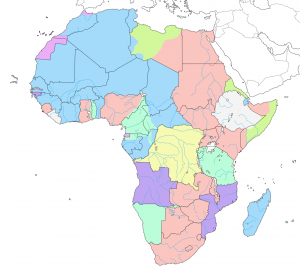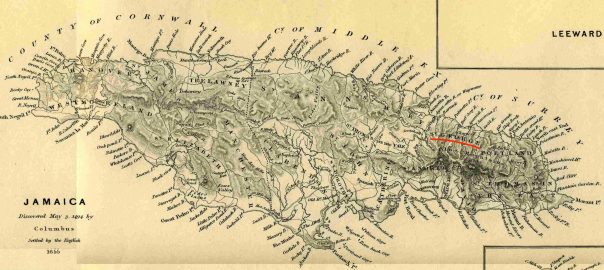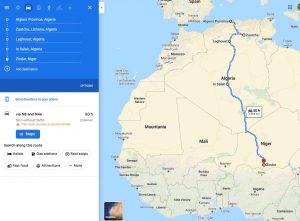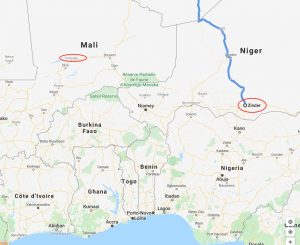by Helena Cobban
The following piece is crossposted from JWE President Helena Cobban’s blog, Just World News:
Sometimes, you find a book. And sometimes, when you are ready for it, a book finds you. Such has been my experience this past week with Sven Lindqvist’s slim 1992/96 volume “Exterminate All the Brutes”: One Man’s Odyssey into the Heart of Darkness and the Origins of European Genocide. In recent weeks, as alert readers of this blog will have noticed, I have spent quite some time pondering the extensive, appalling, 500-year-long record of various “White” European settler-colonial projects around the world (and their relationship to the equally appalling record of the Transatlantic slave trade.) I had some nagging questions to which I still sought satisfactory answers. So I hunted on my bookshelves for the copy of “Exterminate All the Brutes” that I hoped was there. I was pretty certain– but not 100%– that it had survived the huge culling I did of my library when we moved back to DC a couple of years ago. And it had. I pulled it out and have been (re-)reading it ever since. It must be 15 years or more since I first read it. But on this second reading, it answered all my questions– and then a lot more. Finally, here in Washington DC in July 2020, the book found me.
If thinkers in today’s “Black Lives Matter” movement here in the United States– or in any other context, come to that– want to gain a deep understanding of the relationship between “White” European nations and Africa (of which the whole saga of the slave trade is one key subset), then this is a must-read text.
Lindqvist, a Swedish writer and thinker, died just over over a year ago, aged 87. His other well-known books in English are A History of Bombing (which was how I first discovered his work), and Terra Nullius, which is a study of the extermination of the Aboriginal peoples of “Australia” by the British.
The book’s title is, of course, a homage to Joseph Conrad and the words with which Kurtz, the antihero of his novella Heart of Darkness, summarizes the content of all his high-flown rhetoric about the “civilizing mission” the White Europeans were pursuing in Africa. Lindqvist spends considerable time exploring the real-world context and background of much of Conrad’s endeavor with Heart of Darkness. Such as, the fairly well-known fact that Conrad had himself served as a ship’s captain plying between some of the ports in the Belgian Congo– including , during the key years of the late 1880s and early 1890s when the brutality that the Belgian mercanto-administration and its many White European hangers-on were practicing there was at its height… Or, the fact that in 1889, all of London society had been super-excited by the victorious return to London of British explorer Henry Stanley, who had just with some (rather mixed) success and considerable brutality completed a trek that took him from the Atlantic, through Congo, and across the heart of Africa to “Lake Albert” at Congo’s eastern border with Uganda– all in order to “rescue” a medical officer called Emin Pasha who had been working for the British in Sudan but whose outpost had been cut off when a rebellion in Sudan ousted the British from the capital, Khartoum…
Lindqvist’s clear conclusion is that, in writing Heart of Darkness, Conrad– who as a Pole by nationality was clearly an “outsider” to British society but had a very clear-eyed view of it– was drawing heavily on (and deeply critiquing the moral consequences of) both those sets of experiences.
Lindqvist, who had a PhD in the History of Literature, writes his books in a distinctive way, and this one is no exception. He divides his chapters into shorter sections that are numbered sequentially throughout the whole book: in this case, 1- 169. The majority of these sections deal with his historical, literary, and philosophical explorations of the topic at hand, and are well footnoted. But in Exterminate, some of the sections are accounts of an overland trip he appeared to have been making while writing the book. These sections explicitly chronicle the travels he took on overcrowded, extremely jolty local buses across the Sahara from El Golea (now El Menia) to In Salah– both in central Algeria– to Zinder, in southern Niger. But late in the book he mentions that on that same trip he had also visited the towns of Zaatcha and Laghouat in northern Algeria; and I imagine he had started out from Algiers…. Hence, the whole itinerary that I put onto the map there.
Yet others of the sections of his book are more personal. Some recount a series of ever more horrific nightmares, that may well have been nightmares he suffered while doing the research and reflection that he describes in the bulk of the book. Others are fragmentary reminiscences of his childhood. Such as: His mother’s anger at, and cruelty to, her mother-in-law, young Sven’s paternal grandmother, who lived with them (and whose body and room both emitted “a strong sweetish-sour odor”). Or, the feelings of burning shame he had when his father beat him with a birch rod.
In this latter context, he writes (p.19):
I imagined he was ashamed of hurting me so, so that the shame had gone over into rage that made him strike even harder than he had intended. But perhaps it was my own shame that I wrongly read into into actions.
I did know for certain only that people are seized with a kind of madness when they take to violence.
(My italics there.)
Most of the book, though– and certainly, the intent of the book– is a multi-faceted investigation into the massively genocidal practices of the numerous settler-colonial projects that various “White” European countries pursued in the 18th and 19th centuries CE in many different continents: in North America, Australia, and especially, Africa. His investigation, moreover, is not merely into what those various European settler-colonials did but why— and also, into how easily they found themselves able to justify their genocidal violence and outright cruelty to themselves and their home publics.
At one level, as he demonstrates, it was all about “civilization” and the need the settler colonials felt to impose it on the natives of the lands they had conquered– at least, on any such remnants of the original Native populations as had survived.
At another level– and this one became a lot more important as the 19th century CE proceeded, it was about “scientism”– specifically, Darwin, and the many uses the settler colonials made of his theories of “natural selection” (and eugenics.) Lindqvist tells/reminds us that on his way to the Galapagos, in 1833 the young Darwin had witnessed with his own eyes an extermination campaign in Argentina that the Spanish Governor of Buenos Aires, General Juan Manuel de Rosas, undertook against the Indigenos of Patagonia. According to Lindqvist (p.117, Sec 111), Darwin “was disturbed by the brutality of the Argentinian hunt for human beings. His teacher, Charles Lyell [a celebrated British geologist], helped him to place what he had seen into a larger context. Man was a part of nature and in nature even destruction is natural.”
By 1871, in his book The Descent of Man, Darwin seemed quite at ease with the “natural selection” justification for extermination. “At some future period not very distant as measured in centuries,” Lindqvist quotes him as writing, “the civilized races of man will almost certainly exterminate and replace throughout the world the savage races.”
[I undertook a speedy online search for this sentence, to try to find a page number in some edition of the book. What I mainly found is that it is widely quoted on pro-Nazi websites like Daily Stormer, and Stormfront…]Lindqvist traces the intellectual history of “White” supremacist thought in mid-19th century Britain in some detail. He concludes (p.115, sec. 107) that, “During the nineteenth century, religious explanations [for exterminations/genocides] were replaced by biological ones. The exterminated peoples were colored, the exterminators white.”
At pp.140-41, sec. 135, he writes:
I believe I have demonstrated that one of the fundamental ideas of the nineteenth century was that there are races, peoples, nations, and tribes that are in the process of dying out. Or, as the Prime Minister of England, Lord Salisbury, expressed it in his famous speech in the Albert Hall on May 4, 1898, “One can roughly divide the nations of the world into the living and the dying.”
… He spoke the truth. During the nineteenth century, Europeans had encroached on vast territories in northern Asia and North America, in South America, Africa, and Australia. And the “dying nations” were dying just because their lands had been taken from them.
The word genocide had not yet been invented. But the matter existed.
… We do not want to remember. We want genocide to have begun and ended with Nazism. That is what is most comforting.
I am fairly sure that nine-year-old Adolph Hitler was not in the Albert Hall when Lord Salisbury was speaking. He had no need to. He knew it already. The air he and all other Western people in his childhood breathed was soaked in the conviction that imperialism is a biologically necessary process, which, according to the laws of nature, leads to the inevitable destruction of the lower races…
Lindqvist’s book is powerful because it provides a stark, broad-brush history of the encounter of “White” Europeans with the non-“White” peoples of the world, over the past 500-plus years. He tells us (sec. 103) about the Guanches, “an advanced, Berber-speaking Stone Age people”, who were the first people to be destroyed by European expansion. They were of African origin but had lived for a long time in the Canary Islands, off the western coast of today’s Morocco:
Their numbers had been estimated at about eighty thousand– before the Europeans arrived.
In 1478, Ferdinand and Isabella sent an expedition with guns and horses to Grand Canary. The plains were quickly captured by the Spaniards, but in the mountains the Guanches continued a stubborn guerrilla warfare. Finally, in 1483, six hundred warriors and 1,500 women, children, and old people capitulated…
That was nine years before the momentous events of 1492.
By 1541, there was one single Guanche left, “81 years old and permanently drunk.”
Lindqvist provides a thorough explanation of how the advances various European communities/nations made in military technology in the “early modern” period of history fueled those Europeans’ ability to dominate and subdue other peoples around the world. He also provides the best explanation I’ve seen as to why it was the societies on Europe’s Atlantic seaboard– Britain, France, Portugal, Spain, Netherlands– rather than the societies of the continent’s interior or its Mediterranean coastline, that came to build the biggest global empires. Namely, that throughout the late 15th and the 16th centuries, those countries/cities along the Atlantic seaboard had been engaged in numerous battles for power among themselves, nearly always involving naval expeditions and naval fights… And that forced them to develop ever new and more capable techniques in shipbuilding, navigation, and naval gunnery.
It was those capabilities, honed near to home, that then enabled them to mount long-distance naval sorties to (and around) other continents, and thus to dominate and colonize land-masses all around the world.
And also, of course, to establish and sustain the trans-Atlantic transport of 12-15 million enslaved persons over the course of 300 years.
Lindqvist writes (p.111, sec. 104):
When Europeans went east as Crusaders in the twelfth and thirteenth centuries, they came across people who were superior to them in culture, diplomatic cunning, technical knowledge, and not least in experience of epidemics. Thousands of Crusaders died because of their inferior resistance to bacteria. When Europeans went West in the fifteenth century, they themselves were bearers of those superior bacteria. People died everywhere the Europeans went.
He writes that many current scholars believe that in 1492 there were roughly equal numbers of people in the Americas as in Europe– “over seventy million.” During the following 300 years, he adds, Europe’s population increased by 250 percent, while the original population of the Americas fell by 90 or 95 percent.
So, the world-conquering European nations were overwhelmingly those of the continent’s Atlantic seaboard. Meanwhile, the various parts of Germany maintained a thriving industrial/manufacturing base and they did not come together as a unified nation until some centuries after the “imperialist/colonizing” European states. (In my view, the lack of a global empire and the failure for several centuries of the German principalities to come together as a single state are likely closely linked. I believe it’s quite likely that for the Atlantic seaboard countries, undertaking the responsibilities of empire was a key factor that spurred the consolidation of the central states back in the metropolitan homeland. Empire was constitutive of nation-building, just as much as– or more than– the other way round.)
But as Lindqvist notes, once the Germans (and the similarly tardy Italians and Belgians) got it in their mind to do transcontinental empire-building, they went at the task with gusto, principally in Africa. Hence, in Belgium, King Leopold II’s huge investment in the “International Congo Society”, founded in 1878 (and his sponsorship of the same Henry Stanley as his principal agent running that extremely brutal venture.) Hence Italy’s rush into Libya, Eritrea, and Somalia.

And hence the 1884-85 Conference of Berlin and the Treaty that emanated from it that divided the whole land-mass of Africa (except for Ethiopia and a couple of other tiny slivers of land) among the European powers… and Germany’s pursuit of settler-colonial projects in Namibia (Southwest Africa) and East Africa.
I have written before about the degree to which Germany’s exterminationist practices in Namibia pre-figured the more highly industrialized extermination campaign it undertook under Nazism. Lindqvist provides another dimension of this story. He notes that during the post-WWI settlement, Germany was stripped of its African “possessions”, which were then divided up among the victors. So when Hitler came to power, seeking Lebensraum for the German people, he turned instead to the lands to the East of Germany. But the impetus was still the same; and this settler-colonial project was still based, to a considerable extent– as Lindqvist traces in the book– on the same ideas of the “survival of the fittest” arguments that had been so popular in the drawing rooms of 19th-century London.
Lindqvist notes that the Nazis’ concepts of racial superiority extended not “only” to the Jews and Roma whom they exterminated in their labor camps and gas chambers, but also to all the peoples of Eastern Europe. “In the war against the western powers,” he writes, “the Germans observed the laws of war. Only 3.5 percent of English and American prisoners of war died in captivity, though 57 percent of Soviet prisoners of war died. Altogether 3.3 million Russian prisoners of war lost their lives.” He also notes (p.156) that when Hitler wrote Mein Kampf in the mid-1920s, he had already previewed how Germany and England should divide up the world: “Germany is to expand eastward just as England had already expanded westward in America and south in India and Africa.”
“Auschwitz,” Lindqvist writes on p.160, “was the modern industrial application of a policy of extermination on which European world domination had long since rested.”
Exterminate All the Brutes is not just a broad survey of the history, record, and ideological underpinnings of “White” Europeans’ practice of settler colonialism and its closely associated practice of widespread genocide. It is also a gently but persistently argued polemic aimed at other historians and writers who claim the singularity of the Holocaust in human history. In section 155, Lindqvist writes that one book about the Holocaust, written by Arno J. Mayer, had argued that you would have to go back to an infamous massacre in Magdeburg in 1631 or to a Crusader massacre of 1,100 innocent Jewish inhabitants of Mainz, in 1096, to find an equivalent to the mass murders of Jews during World War II.
But he notes that Mayer had made no mention in his book of the massive killings that accompanied the European slave trade or the numerous European wars of extermination in the colonies, which were much more recent than the massacres at Magdeburg or Mainz.
Lindqvist writes,
On my journey through the Sahara alone, I have been in two Mainzes. One is called Zaatcha, where the entire population was wiped out by the French in 1849. The other is Laghouat, where on December 3, 1859, after the storming, the remaining third of the population, mainly women and children, was massacred. In one single well, 256 corpses were found.
Zaatcha, by the way, is the place where Sheikh Ahmed Bouziane was the leader of the Indigenous resistance…. the same guy who– along with many of his fellow-resistants– was beheaded and then had his skull taken off to Paris as a trophy, as I described here recently.
So where was Lindqvist heading on his lengthy and physically punishing bus journey, southward through the heart of the Sahara? In the last portion of the book he tells us he is going to Zinder, in Niger; and reveals that he is doing so for a reason.
He tells us (p.161, sec. 157) that in 1898, as Joseph Conrad was writing Heart of Darkness, most likely building on the whole history of the expedition Henry Stanley had mounted to “rescue” Emin Pasha from the shores of Lake Albert some nine years earlier, a new European-ordered expedition was also setting out to cross Central Africa from West to East. This one was sent by the French Minister for the Colonies, who charged two young army officers, Paul Voulet and Charles Chanoine, with leading an expedition “to explore the area between the Niger and Lake Chad and place it, as was said, ‘under French protection.’”
Their itinerary would, it seemed, remain in territory that the Treaty of Berlin had granted to France– but it skirted the British-controlled area of today’s Nigeria.
Both the young officers had already won well-authenticated reputations for blood-thirsty behavior in Africa before they set out to lead the Central African Expedition of 1898.
This expedition consisted of nine French officers and 190 French-trained African soldiers and auxiliaries. Near Timbuktu, in today’s Mali, they captured “800 black men and forced them to be bearers (porters)”, without any pay.
Lindqvist continues:
A dysentery epidemic broke out, and 148 bearers died during the first two months of the expedition. Chanoine set an example by having anyone who tried to escape shot.
They requisitioned food from the villages, naturally without payment…
Meanwhile, Joseph Conrad was sitting at his Chippendale desk at Pent Farm in Kent, penciling out his story about Kurtz…
To recruit new bearers, the French sent out patrols, which surrounded the villages at dawn and shot anyone trying to escape. As evidence that they had carried out their orders, the soldiers took the heads back with them. Voulet had the heads impaled on stakes and placed out to frighten the population into submission.
Of the nine French officers it turned out that one, a certain Lieutenant Peteau, did not have the stomach for the grisly task at hand.On January 29 (“when Conrad had almost finished his story”), Peteau was sent back to his base– probably in Timbuktu, in Mali– after being accused of a “lack of discipline and enthusiasm.” The following week, he wrote a 15-page letter to his fiancee back home, telling her of some of the atrocities he had been involved in.
She forwarded the letter to her representative in the French parliament, and in mid-April the local commander– whom the French confusingly called the “Governor of Sudan”, though his HQ was almost certainly located many hundreds of miles east of today’s Sudan– gave orders to a Lieut.-Col. Klobb, who was in Timbuktu, to head east and remove Voulet from the command of the expedition.
Lindqvist writes:
Just as in Conrad’s novel Marlow set off into the interior to find Kurtz, Klobb took up the hunt for Voulet. His tracks were easy to follow; they consisted of ruins and corpses, which increased in number appallingly the closer Klobb came.
Klobb found guides who had displeased Voulet and had been strung up alive, low enough for hyenas to eat their feet, while the rest of the bodies were left to vultures… [etc.]
I am not going to ruin the dramatic and very disturbing climax of the account that Lindqvist gives of the encounter between Klobb and Voulet, all of which he had thoroughly researched in the French archives, including some papers later stored in an official French-government repository in Aix en Provence. Suffice it to say here that Lindqvist judged (p.168) that that encounter was, “even more dramatic than the meeting between Marlow and Kurtz in Conrad’s novel, by then already finished and published in Blackwood’s magazine.”
And also, to note that it took place near Zinder… which was why Lindqvist had set out to travel there in the first place.
As for the details and reports about what had happened between Voulet and Klobb, Lindqvist wrote (sec. 166):
Eventually the facts trickled out. Of course, educated Frenchmen knew roughly, or even quite precisely, by what means their colonies were captured and administered.
Just as educated Frenchmen in the 1950s and 1960s knew what their troops were up to in Vietnam and Algeria.
Just as educated Russians in the 1980s knew what their troops did in Afghanistan, and educated South Africans and Americans during the same period knew what their ‘auxiliaries’ were doing in Mozambique and Central America respectively.
Just as educated Europeans today know how children die when the whip of debt whistles over poor countries.
Here are the last two sections of the book:
168
Everywhere in the world where knowledge is being suppressed, knowledge that, if it were made known, would shatter our image of the world and force us to question ourselves– everywhere there, Heart of Darkness is being enacted.
169
You already know that. So do I. It is not knowledge we lack. What is missing is the courage to understand what we know and draw conclusions.
The opening section of the book is almost exactly the same as the last one. When you read it at the beginning of the text, it is intriguing and draws you in. When you read it at the end, there is no more mystery. He is right. It is courage that we lack.
Back at the beginning of this month, I had the honor of welcoming onto Just World Educational’s “World After Covid” webinar series the brilliant anti-imperialist leader and thinker Vijay Prashad. He noted (at 38m30s) that after a mid-19th-century uprising of enslaved persons in the British-controlled colony of Jamaica, “the British government began to pay the plantation owners for the loss of the property, by which we mean human beings. And that payment ended only in 2016 or 2017.”
I grew up in Britain and was (I thought) fairly well educated in elite British private schools in the 1950s and 1960s. But I had never learned anything about that history of British reparations to slave-owners. This past week, I found this website, run by the “Center for the Study of the Legacies of British Slave-ownership” at University College London. It has a searchable database, into which I entered my not-common family name, Cobban. One result came up, as shown.
So on 9th November 1835 a James Cobban had submitted a claim for £39 1s 8d as “reparation” for freeing 2 enslaved persons. The claim had not been contested and thus was presumably paid to him by the British taxpayer. (At today’s prices, that would be £5,115.70 or US$6,548.10.)
My father’s name was James Cobban. He was born in 1910. But James is a quite common name in our family. I do own a small (and badly painted, but cute) portrait of a direct Cobban ancestor of around the 1830s. His name was John.
On July 3, I published this blog-post on “The unbearable legacies of settler colonialism”. In it, I wrote,
the “Enlightenment” was not a happy time at all for members of the “Darker Nations”.
And… how many of the great institutions in which that “Enlightened” knowledge of the world was displayed, processed, and shared, had themselves been built with super-profits made from investment in the international slave trade? I still recall how depressed I was on learning that places like the Mauritshuis in The Hague or Brown University in Rhode Island, or numerous other places whose cultural/intellectual role I valued had all been built with slave-trade super-profits…
Right. But it is not just “institutions” that profited from the deeply immoral practices of the slave trade and enslavement in general. It was also many hundreds of thousands of European families, in Britain and elsewhere. Mine among them.
As Sven Lindqvist wrote, “It is not knowledge we lack. What is missing is the courage to understand what we know and draw conclusions.”




